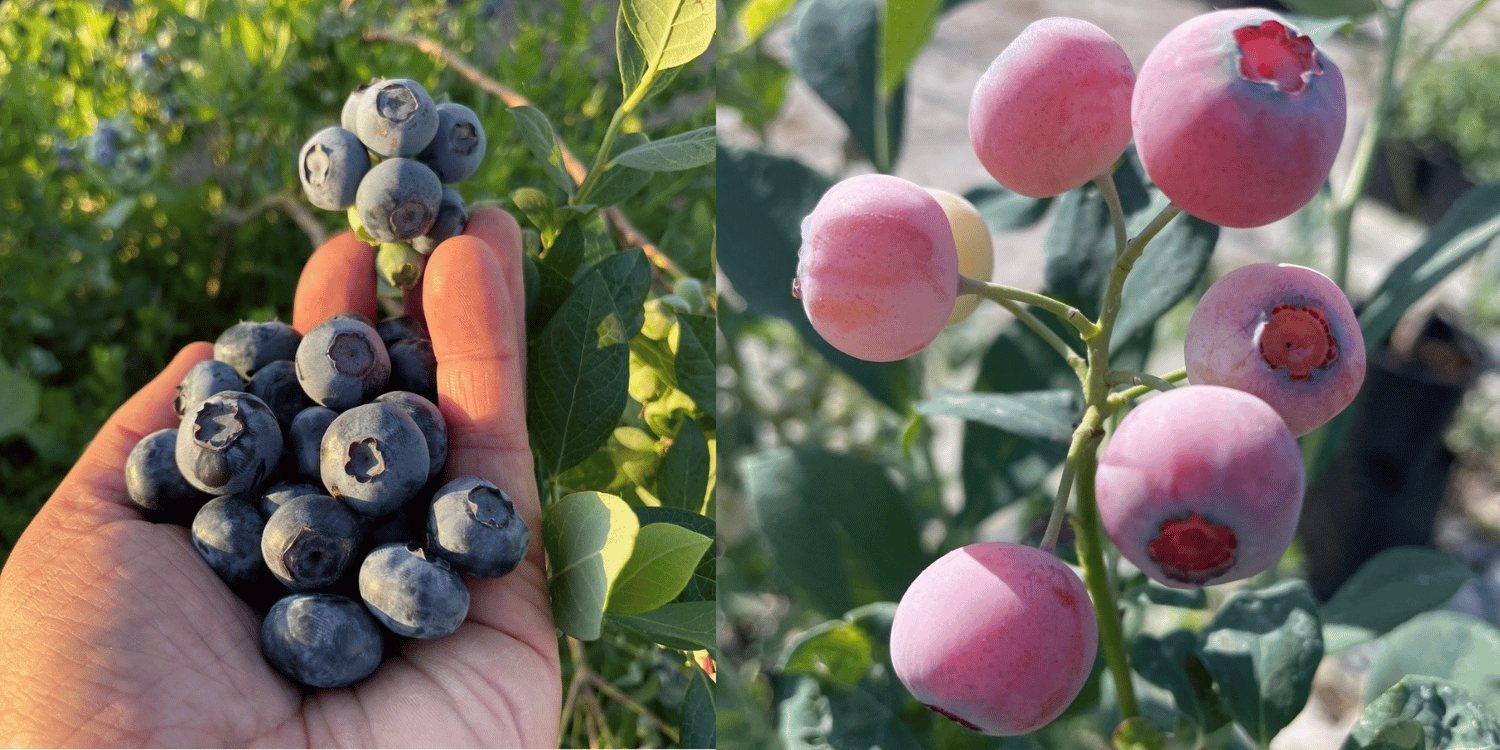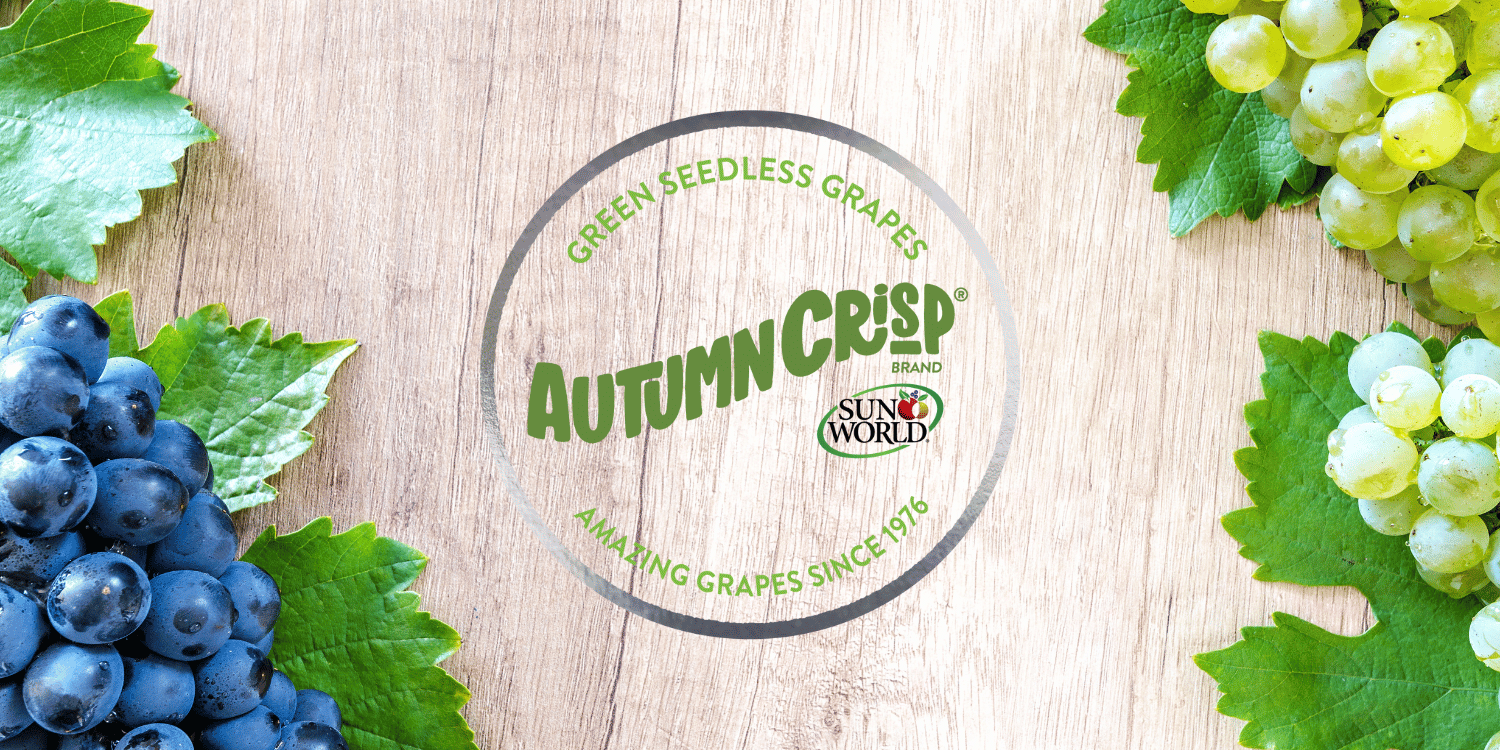Delivering fresh produce is a crucial yet often challenging task for companies worldwide.
The issue rests with maintaining freshness while also ensuring efficient and timely transportation.
While this can be a complex process, there are strategies that can immensely aid in efficiency and general productivity.
These tactics not only aim to meet the customers’ expectations but also intend to reduce operational costs.
Through this piece, we aspire to share valuable insights gained from years of experience in the industry.
Read on to discover a compilation of advice and guidelines devised to enhance the efficiency of fresh produce delivery systems.
- Utilize GPS for accurate navigation while delivering.
- Opt for off-peak hours to circumvent heavy traffic.
- Optimize routes favoring direct paths over scenic ones.
- Ensure regular maintenance of delivery vehicles for reliability.
- Invest in efficient refrigerated transport for freshness.
While these key takeaways do provide a solid starting point, it’s important to remember that there’s more to this subject than meets the eye.
Let me tell you, as we proceed, we will also be exploring other critical areas related to the efficient delivery of fresh produce. These include, but are not limited to, effective communication with customers, the role of technology in achieving operational efficiency, and how to handle unexpected challenges during delivery.
This is essential knowledge that could greatly enhance your capability to ensure the freshness and quality of produce during transit. Your time invested here won’t be wasted, I assure you.
I look forward to sharing these insights with you in the upcoming sections.
Tips For Optimizing Routes For Fresh Produce Delivery
1. Use GPS navigation for accurate directions
In Short: GPS navigation tools significantly enhance the efficiency and precision of fresh produce delivery, reducing wasted miles and delivery times while providing real-time updates. These tools also foster better customer experiences through increased accountability, offer valuable vehicle tracking data for driver behavior improvement, and enable cost savings through route optimization and reduced wear on vehicles.
Modern technology has several implications for the efficiency and accuracy of delivering fresh produce. GPS navigation tools, for example, play an indispensable role in creating accurate routes.
These tools allow drivers to exhibit a great level of precision in meeting desired delivery points and timelines. GPS navigation is key in significantly minimizing wasted miles traversed or hours spent on the road.
Another advantage of GPS is its potential for real-time updates. Traffic reports, road construction, and detours are just a few examples of the obstacles that can be promptly tracked and accounted for.
Presented next are some of the main functions of GPS navigation that can be harnessed to improve efficiency in fresh produce delivery:
- Optimal Route Planning – This feature routes in real-time considering various elements such as traffic conditions, road structures, and distance.
- Real-time tracking – It provides accurate information about the current location of the delivery vehicle.
- Alerts and notifications – Notifications for traffic jams, constructions, and blocked roads aid in avoiding unnecessary delays.
The use of these innovative technologies does not only help ensure punctuality, but also maintains the freshness of the produce by reducing the time it spends on the road. GPS tools can thus significantly influence the quality and freshness of delivered produce.
Another potential utilization of the GPS technology is the tracking and monitoring of the delivery vehicle. This includes tracking speed, idle time, hard braking, or any deviations from the assigned routes. Such data can be useful in improving driver behavior, which further enhances route efficiency and reduces unnecessary road risks.
One should also point out the role of GPS in ensuring accountability. Through GPS, customers can be kept informed about the expected delivery times, any delays, and the reasons for such delays. This transparency builds trust and enhances the customer experience.
Pro Tip: GPS navigation tools play a crucial role in enhancing efficiency and accuracy in fresh produce delivery by providing optimal route planning, real-time tracking, alerts and notifications, ensuring punctuality, maintaining the freshness of the produce, enhancing driver behavior, and even offering significant cost savings.
Lastly, GPS can have significant cost savings implications. By optimizing routes and reducing miles traveled, fuel consumption is reduced. So is wear and tear on the delivery vehicles, leading to lower maintenance costs. Over time, these savings can have a significant positive impact on the profitability of the fresh produce delivery business.
Therefore, the use of sophisticated GPS navigation tools certainly proves to be a game-changing approach for optimizing routes for fresh produce delivery. It brings about a host of benefits – from boosting efficiency to savings costs – that can significantly transform the performance of the delivery operations.
2. Schedule off-peak hours for reduced traffic
In Short: Scheduling fresh produce delivery during off-peak hours when road traffic is low, can reduce transport time, prevent delays and preserve produce freshness. However, it’s crucial to strategically plan these schedules considering local restrictions and recipient preferences.
When optimizing routes for fresh produce delivery, timing is very critical.
One suitable way I have found to reduce transport time is by scheduling deliveries during off-peak hours.
Off-peak hours refer to periods of the day when road traffic is lower compared to the typical rush hours.
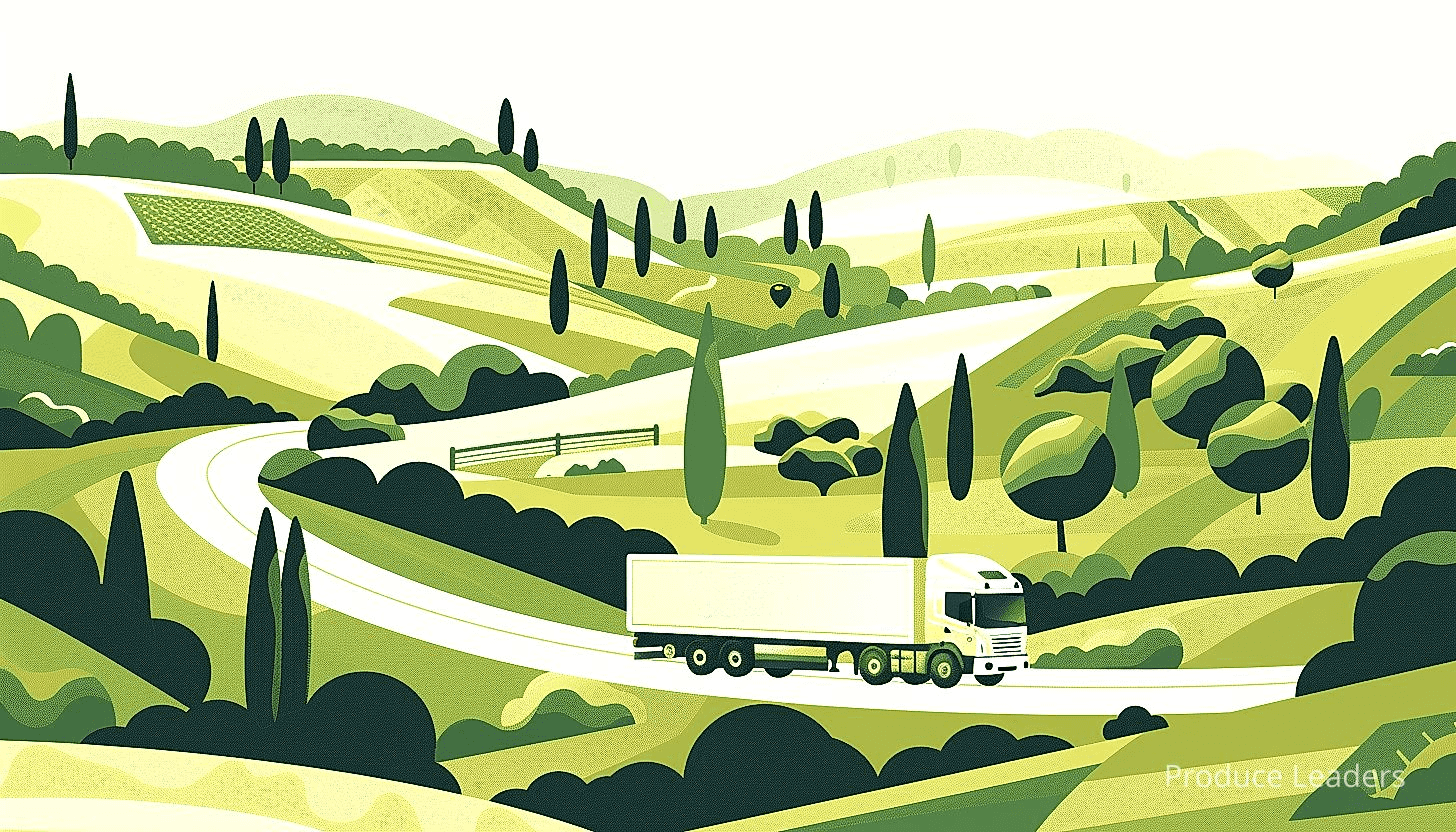
By doing so, it avoids traffic delays and ensures fast and efficient delivery of the produce.
The freshness of the product is largely dependent on the speed at which it reaches the customer.
Next, are a few points which highlight the benefits of making deliveries during off-peak hours:
- The roads are less congested, leading to a decrease in travel time.
- Reduced possibilities of delays caused due to heavy traffic or accidents.
- With lesser vehicles on the road, there’s a lower chance of encountering erratic drivers or facing sudden stops which slow down progress.
- The reduced stress of driving during off-peak hours could potentially heighten the driver’s concentration and efficiency.
Nonetheless, scheduling off-peak hours should be done strategically.
It is essential to learn about the off-peak hours specific to the area where the delivery is taking place.
In most cases, these periods could range between nighttime to early morning hours.
However, bear in mind that some areas have restrictions or are inaccessible during these hours.
It is thus important to gather the necessary information from local authorities or businesses.
Furthermore, confirmation is necessary whether operating during these hours is beneficial for both the delivery company and recipients.
Pro Tip: To optimize fresh produce delivery routes and ensure their freshness, schedule your deliveries during off-peak hours when road traffic is lower.
Some recipients might be unwilling to accept deliveries at odd hours, which is totally understandable.
Finally, though scheduling deliveries during off-peak hours might involve some challenges, it should not be overlooked as a strategy for optimizing fresh produce delivery routes.
3. Prioritize Direct Routes Over Scenic Paths
In Short: Optimizing logistics for fresh produce delivery involves prioritizing efficient, direct routes over scenic ones to maintain product freshness and reduce fuel costs. This entails understanding traffic patterns, considering road conditions, and assessing toll costs, with the ultimate aim being customer satisfaction and operational profitability.
Transporting fresh produce requires a sleek approach that often dismisses scenic routes for direct paths.
Efficiency is central to optimizing routes; hence, focusing on the fastest, most logical routes is paramount.
Speedy deliveries ensure the produce maintains its maximum freshness, which is a key sales driver in this industry.
Another factor to consider is that these direct routes are not only quicker but can also contribute significantly to reducing fuel costs.
Therefore, selecting direct paths over scenic ones can result in huge savings and increased profits.
Despite the potential benefits, it’s crucial to remember that choosing direct routes doesn’t only consist of picking the shortest distance on a map.
Understanding traffic patterns, considering road conditions, and factoring the costs of potential toll roads all play in defining the most optimal direct route.
In a perfect world, these factors can be best outlined through the use of a well-thought list:
- Distance: Even though a route is shorter, it might not always be the fastest or most cost-effective. Keep in mind elements such as traffic, possible roadwork, and tolls.
- Traffic patterns: Understanding when traffic is at its peak can save time and money when planning your delivery routes.
- Road conditions: Considering the condition of the road is just as important as knowing the length or the traffic pattern. Bad roads can lead to vehicle damages and delay deliveries.
- Tolls: Although paying for a toll might seem like a quick route, the cost might not outweigh the time saved. Over time, frequent toll road use can negatively impact the company’s bottom line.
Once these considerations are taken into account, the accurate selection of direct routes becomes a straightforward process. Furthermore, there’s a wealth of GPS and route planning software available to help make these decisions in a data-driven manner.
While the purpose of fresh produce delivery is not to provide a sightseeing service, it doesn’t mean that parties involved in delivery wouldn’t appreciate a beautiful view occasionally.
However, it’s essential to ensure that such luxuries don’t interfere with the core operational efficiency of the business.
In a nutshell, the selection of direct routes over scenic ones should be viewed as a necessary business decision that aims to deliver farm-fresh goods in the quickest possible time.
The ultimate goal is to ensure that the produce brought to market are fresh and of high quality, leading to customer satisfaction and operational profitability.
4. Regularly maintain delivery vehicles for reliability
In Short: Regular maintenance of delivery vehicles, including engine checks, regular oil changes, tire testing, and ensuring optimal refrigeration, is crucial for timely fresh produce delivery and fostering customer satisfaction. A comprehensive maintenance strategy, investing in quality spare parts, preventive checks, and driver training significantly improve the efficiency, punctuality, and reliability of the delivery process.
In the fresh produce delivery industry, the reliability of delivery vehicles is an indispensable aspect of maintaining optimal routes. Their regular maintenance helps ensure that the produce arrives at its destination on time and in prime condition.
Allowing vehicles to fall into disrepair not only jeopardizes punctuality but also puts the freshness of produce at risk. Degraded parts can lead to breakdowns, causing major delays in transit.
Besides affecting the product’s freshness, mechanical malfunctions can also lead to unscheduled route changes and even failure to complete deliveries, disrupting the flow of operations and potentially breaching clients’ trust.
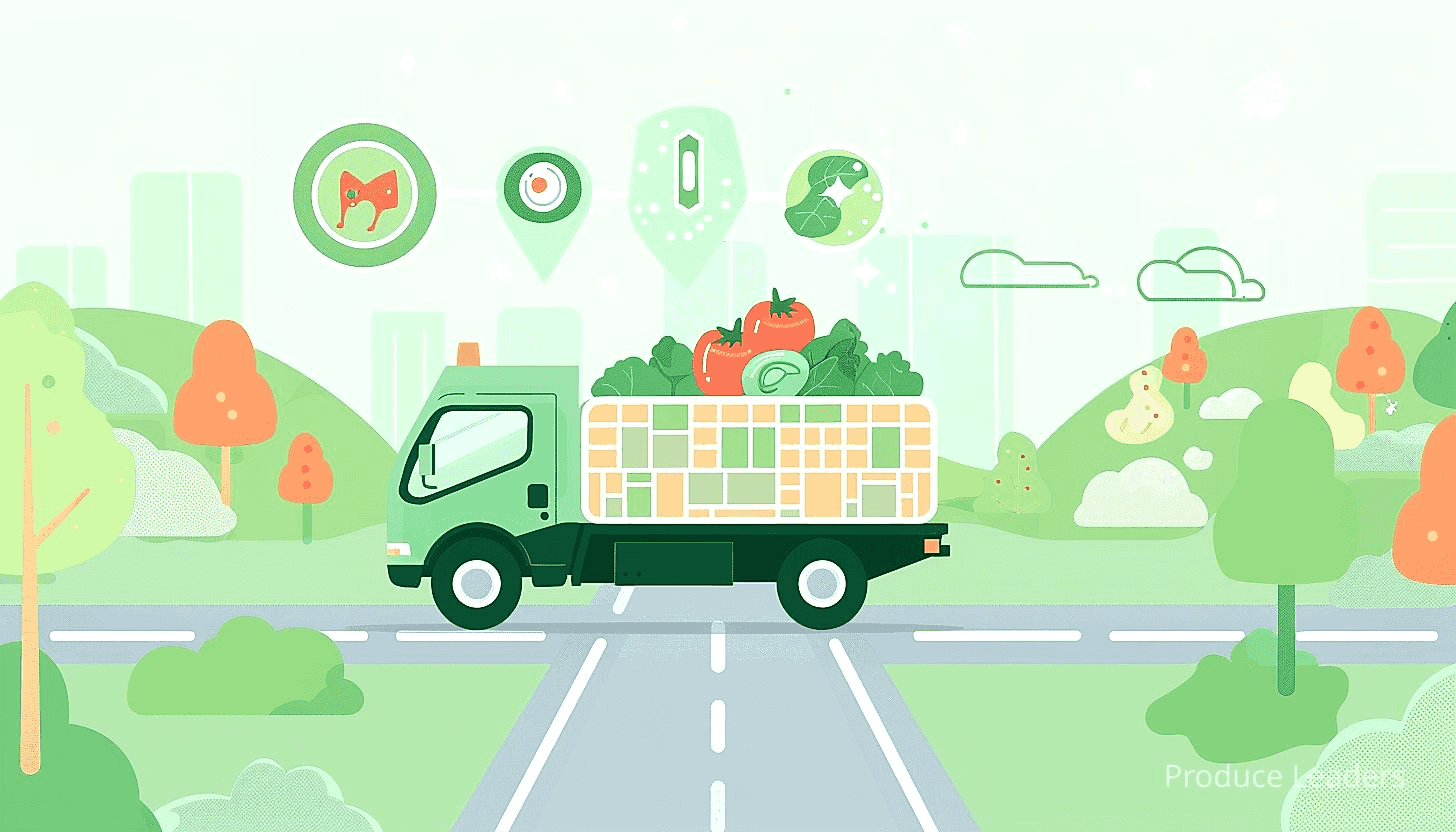
But how, exactly, should one go about maintaining delivery vehicles regularly? Beyond the standard best practices you might already be following, a few key points warrant special attention in the context of fresh produce delivery.
Here are some essential elements to consider:
- Engine maintenance is crucial. Regular oil changes and inspections can prevent breakdowns. This is especially important for refrigerated vehicles, where engine performance impacts temperature regulation.
- Tire maintenance, including regularly checking for proper inflation and potential punctures, can significantly reduce the risk of delays due to tire-related issues.
- Vehicles with a refrigeration system demand additional attention. The refrigeration units should be serviced frequently to ensure optimal temperature control.
- Keeping the exterior of the vehicles clean is also crucial. Not only does it enhance the company’s image, but it also prevents rust and other potential damages.
Moreover, having a scheduled and routine maintenance strategy helps businesses stay ahead of potential issues. It allows them to detect and address potential vehicle problems before they cause delays or alter delivery routes.
Furthermore, conducting driver training is an effective strategy to ensure optimal vehicle performance. Drivers need to understand the importance of routine vehicle checks and how to handle vehicle breakdowns during delivery.
Investing in quality spare parts is another measure to maintain the reliability of delivery vehicles. Cheaper, low-quality parts may seem like a good way to cut costs, but they wear out faster and may lead to higher long-term costs due to frequent breakdowns.
In essence, to optimize routes for fresh produce delivery, businesses must prioritize the regular maintenance of their delivery vehicles. This contributes to the overall efficiency, punctuality, and reliability of the delivery process. The result is a higher level of customer satisfaction, which is crucial in the competitive world of fresh produce delivery.
Together, all these measures form a comprehensive vehicle maintenance strategy that strengthens the delivery network, ensuring the timely and safe arrival of fresh produce. I want you to remember, there’s no short cut when it comes to the health of your vehicles, just as there’s no substitute for the freshness of the produce you deliver.
As a business, it is imperative to remember that your vehicles- whether they’re bicycles, vans, trucks or something more specialized- are the backbone of your delivery operation. Keeping them in good working order is tantamount to keeping your business on the road. Indeed, well-maintained delivery vehicles are a key asset in optimizing routes for fresh produce delivery, helping to guarantee the high level of service your customers expect and deserve.
5. Upgrade to Efficient Refrigerated Transport
In Short: Upgrading to efficient refrigerated transport is vital for businesses delivering fresh produce as it optimizes temperature control, enhances product quality, and widens delivery range. Regular maintenance and choosing energy-efficient vehicles can ensure optimal functionality while reducing operating costs and greenhouse emissions.
When it comes to delivering fresh produce, temperature control is an important factor to consider.
The freshness and shelf life of fresh fruits, vegetables, and other perishables largely rely on the storage temperature during transport.
Upgrading your current delivery vehicles to efficient refrigerated transport can offer a number of advantages.
First and foremost, it can dramatically improve the quality of the goods you deliver.
This is because refrigerated vehicles are equipped with specialized technology that maintains a consistent temperature throughout the journey, irrespective of external weather conditions.
This consistency helps prevent the growth of harmful bacteria on the fresh produce, thus ensuring the integrity of the goods at the point of arrival.
Furthermore, utilising refrigerated vehicles allows for delivery of a wider variety of fresh produce.
It’s now time for a brief overview of the distinct benefits of using efficient refrigerated transport.
- Maintains freshness – The primary function of refrigerated transport is to keep the produce fresh during transport. Depending on the exact type of produce, this could mean keeping it chilled or even frozen.
- Wider delivery range – With refrigerated transport, you’re not just restricted to the local area. These vehicles are equipped to handle long distance hauls while ensuring optimal temperature control.
- Improved customer satisfaction – Better quality of delivered produce translates to happier customers, enhancing their overall experience, and increasing the likelihood of repeat business.
With these significant advantages in mind, it is essential for businesses dealing in fresh produce delivery to consider investments in efficient refrigerated transport.
It’s also important to note though, that like any other type of vehicle, refrigerated transport vehicles require regular maintenance for optimal functioning.
This can be in the form of regular servicing, mechanical inspections or addressing immediate issues to prevent breakdowns during transit.
Moreover, it’s good to know that there are a variety of refrigerated delivery vehicles available in the market today, ranging from small vans to large trucks, enabling you to choose based on your specific requirements.
Another important point to consider is the energy-efficiency of refrigerated vehicles.
Important: Upgrading your current delivery vehicles to efficient refrigerated transport not only improves the quality and extends the shelf life of fresh produce but also enables a wider variety of produce delivery, thereby enhancing customer satisfaction and increasing the potential for repeat business.
Choose a vehicle with greater fuel efficiency to save on operating costs and contribute to the reduction of greenhouse gas emissions.
After all, using efficient refrigerated transport isn’t just about delivering fresh produce, it’s also about doing so in a sustainable way.
6. Plan for backup routes in case of obstructions
In Short: Having a backup plan for produce deliveries is crucial to prevent delays caused by external factors such as roadwork and traffic accidents. Utilizing real-time traffic apps and being well-versed in local routes ensures timely delivery, maintaining produce freshness and service reputation.
When plotting a course for fresh produce delivery, it is essential to have a contingency plan in place. This includes anticipating any potential roadblocks or obstructions that might slow down delivery.
It is not enough to simply know your primary route of travel. There is a critical importance in having a comprehensive understanding of the area you will be delivering to.
Factors such as roadwork, traffic accidents, and severe weather conditions are external variables that can greatly impact your delivery’s timeliness. These variables can delay your delivery and followingly jeopardize the quality and freshness of your produce.
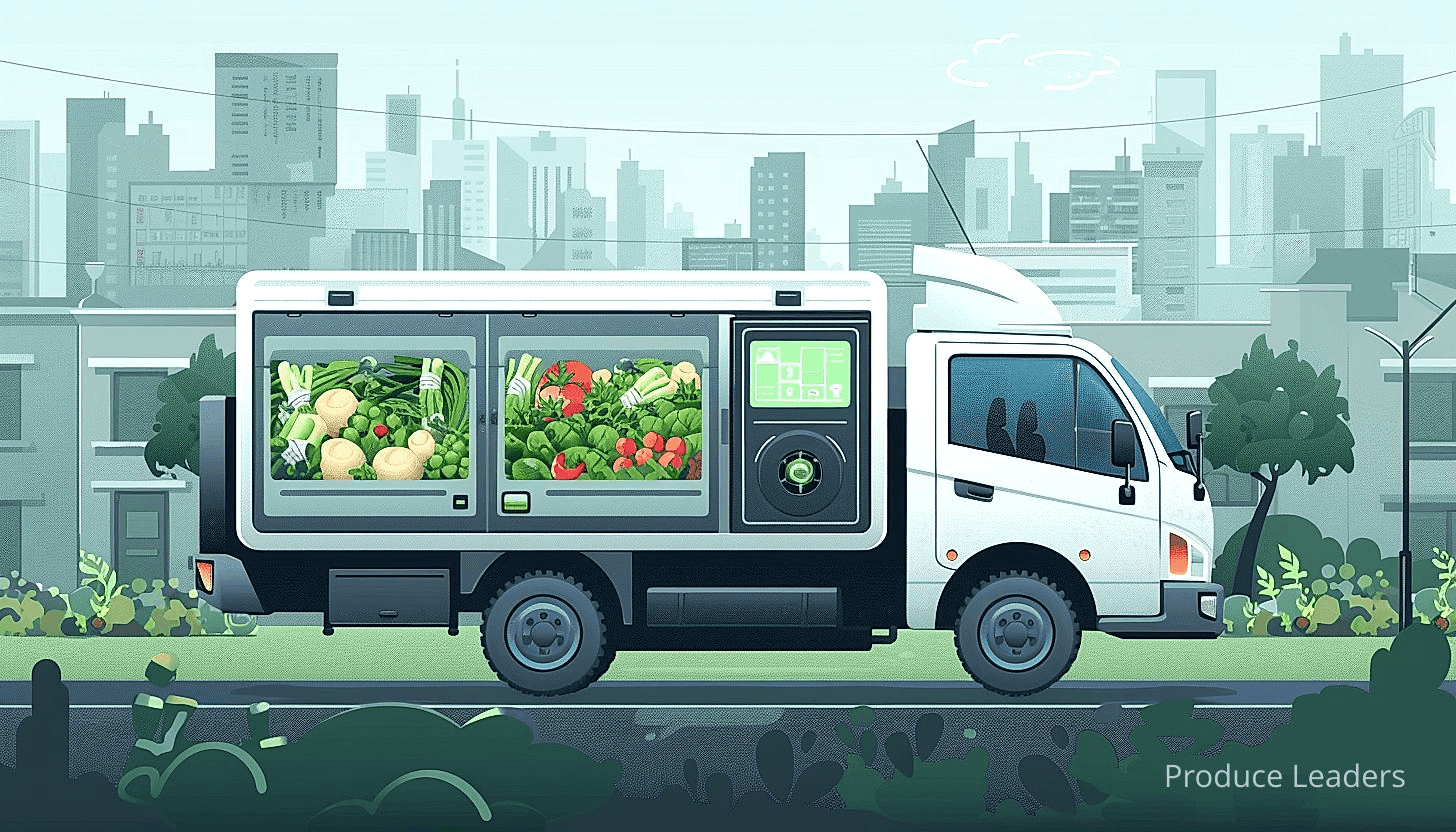
Several tools have been crafted to help proactively manage these potential setbacks. There are a variety of apps like Waze and Google Maps, which alert drivers about real-time traffic conditions and even suggest alternative routes in the case of road obstructions.
However, it would be remiss to rely solely on technology. Drivers themselves should be familiarized with the local area road systems and consider additional routes they could take in the event of delay.
Prior to embarking on a delivery, it would be prudent to explore alternate routes. These detours can serve as effective backup plans, keeping deliveries on track even when unexpected obstructions occur.
Here is a simple guide to preparing backup routes:
- Study the map of your delivery area in detail.
- Identify multiple routes to take from the starting point to the destination point.
- Take into consideration the different potential risks that each route might have.
- From this assessment, rank these alternate routes in order of preference.
- Finally, keep this information accessible – ideally in both a digital format for easy updates and a physical copy in case of technology failures.
By having a well-thought-out process, the driver’s responsibility of delivering fresh produce remains uncompromised, and they are better prepared to deal with any unexpected situations on the road.
Routing isn’t just about finding the fastest or shortest distance. In an industry that loses an estimated 1.3 billion tons of food to spoilage each year, it’s about preserving the integrity of your product.
Last minute changes can present a significant problem in logistics. But, with a proper plan in place, these obstacles can be managed more effectively.
Not only will this safeguard your produce’s freshness, but it also avoids the possibility of disappointing customers, impacting both service quality and reputation.
It’s important to remember, in the fresh produce delivery business, time is of the essence. Any delay can be critical to the freshness and quality of your product. This is why planning for backup routes in case of obstructions is such a crucial tip in optimizing routes.
The Bottom Line
Implementing optimized routing strategies for fresh produce delivery can immensely enhance your business operations.
Efficient delivery routes are instrumental in reducing costs, increasing customer satisfaction, and maintaining the quality and freshness of the produce.
Route planning tools can help in applying these strategies more effectively and in a less time-consuming manner.
In the end, prioritizing route optimization will not only streamline the delivery process but also significantly contribute to your business growth and success.
Keep in mind, only through embracing innovation and continual improvement, can a company thrive in the fast-paced fresh produce delivery sector.





